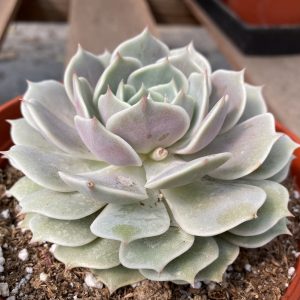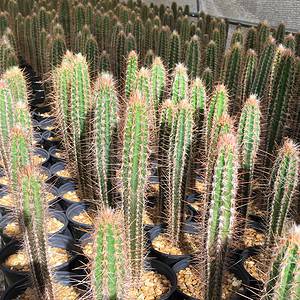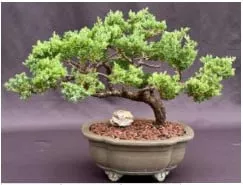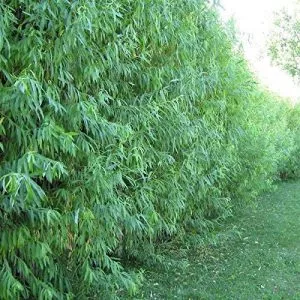No products in the cart.
Table of Contents
Did you know that the Night Blooming Jasmine (Cestrum nocturnum) is known to be the strongest-smelling plant globally?
With a distance of 300-500 feet, a Blossoming Jasmine may disperse the aroma of its blooms! Amazing, isn’t it? Well, that’s not all. Jasmine might bloom up to four times each year, given the appropriate care.
They then yield white berries with many seeds. Simple, slender, smooth, and glossy leaves are considered to characterize the flowering Jasmine. This would look great in the garden, on the patio, or within the house.
This is one of the most remarkable plants for greeting guests that enter the house. Here’s another fun fact about this rare plant: they are insect repellants particularly effective against mosquitoes. Are you interested to know how to efficiently take care of it? You are not in the wrong place, I tell you.
Read more below to find it out!
Night Blooming Jasmine Plant Care Basics

I know you are now excited to learn about the care basics, but first, let me just introduce to you briefly this plant. We provided them in table form below.
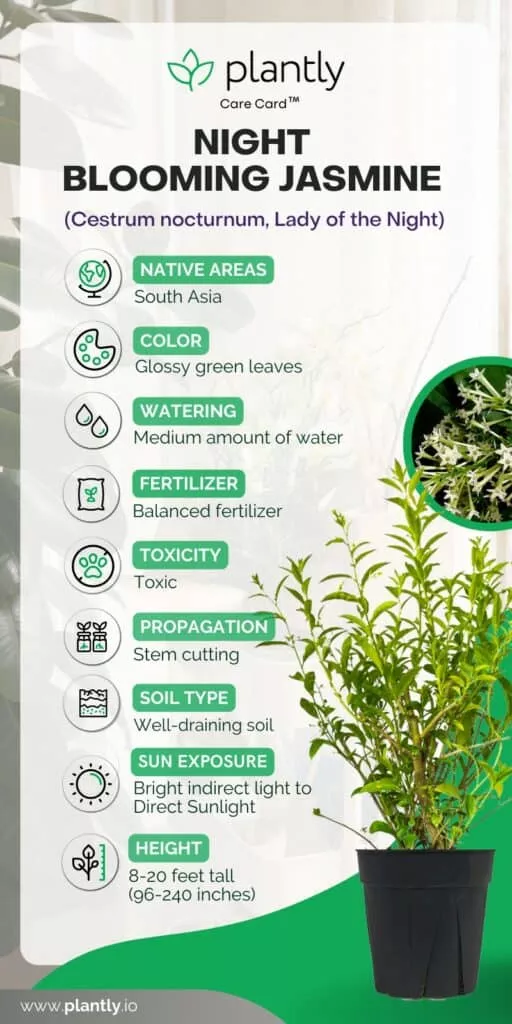
Now that you’ve already known the Night Blooming Jasmine, we will now give what you’ve asked for: care tips! Enjoy reading!
Get the best soil for this fragrant flowering plant.
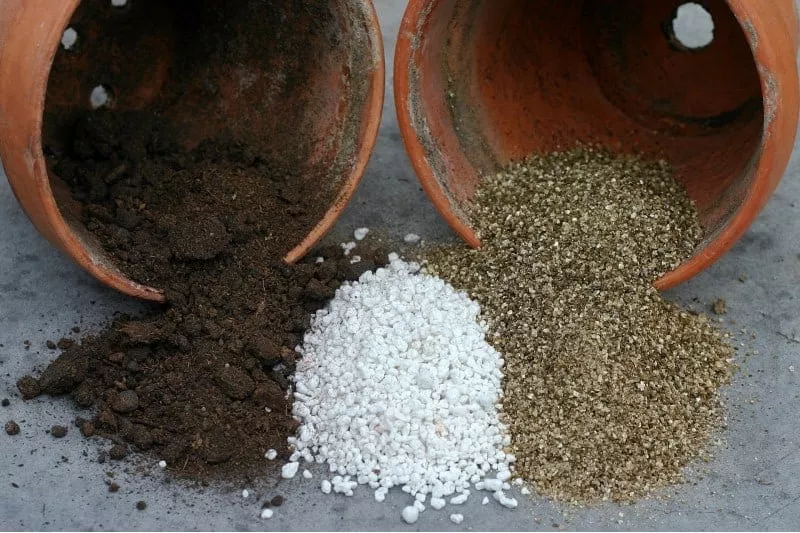
The Night Blooming Jasmine grows best in rich, well-draining soil. You can choose light, loose sandy soil. Some gardeners even add composted cow manure to the soil, providing essential nutrients for plant growth. This plant also likes its soil at a pH level between 6.5 and 7.5.
How frequent should we water them?
Water the Night Blooming Jasmine until it drains from the bottom of the container, then wait until the soil appears dry before watering again. Too much moisture in the soil is not suitable for these plants that is why it prefers well-drained or average-drained soil. This plant’s roots decay and mold will grow as a result of too much water.
However, increase the frequency if the weather is exceptionally dry or hot. Ensure to let the soil dry up again between applications.
Lighting it needs
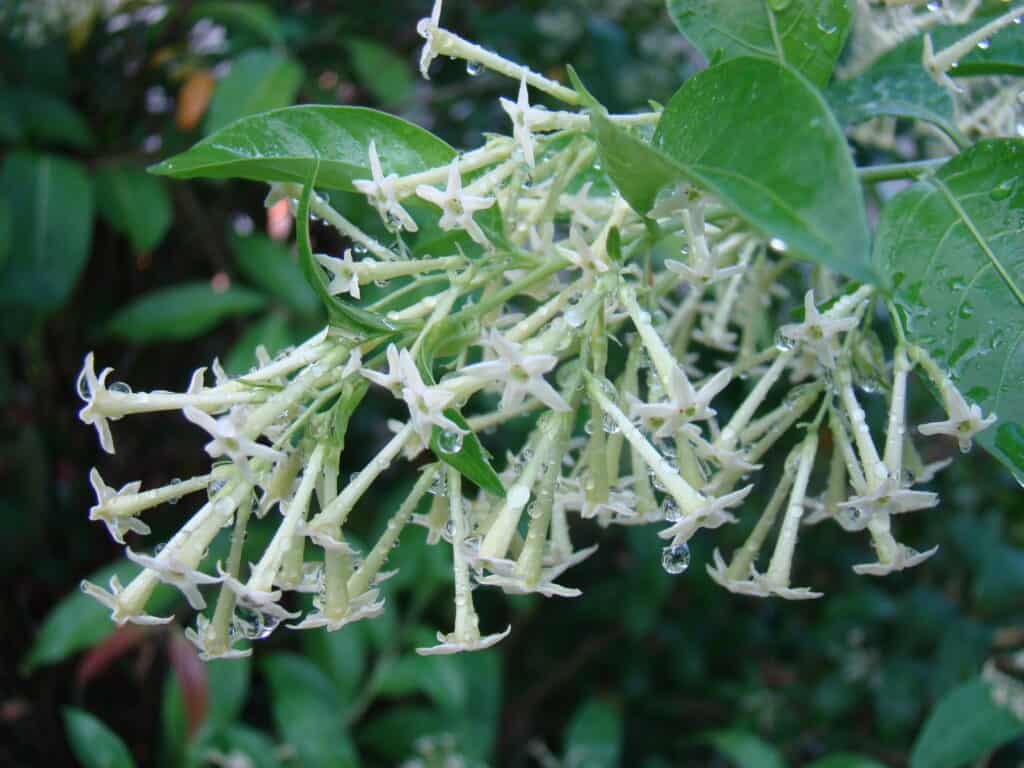
Each day, at the very least, this plant requires six hours of direct sunlight. It can also thrive in partial shade for the day. However, to generate blossoms, the right balance of light is required.
The plant, on the other hand, will wilt if it receives too much sunlight. It will also perish if you leave it in an area with no shade. So, give it appropriate sunlight. If you’re growing plants indoors, a windowsill is the best option.
Temperature & Humidity Requirement
The tropical climate is ideal for the night jasmine plant. If you reside in a colder climate yet want to cultivate Night-blooming jasmine, you can always grow it indoors. However, it is critical to keep the temperature between 70 to 80 degrees Fahrenheit (21.1 to 26.6 degrees Celsius).
In stock In stock Only 1 left in stock In stock
$59.99
Sold By:
Succulent Oasis
Mature Agave Lucky Crown Century Plant.
Rated 4.84 out of 5 based on 352 customer ratings00
Sold By:
Succulent Oasis
$10.99 – $29.99
Sold By:
Succulent Oasis
Medium Kalanchoe ‘Dragonfire’. A beautifully colored succulent.
Rated 4.84 out of 5 based on 352 customer ratings01
Sold By:
Succulent Oasis
$29.99
Sold By:
Succulent Oasis
Mature Succulent Plant Echeveria Lola.
Rated 4.84 out of 5 based on 352 customer ratings00
Sold By:
Succulent Oasis
$12.00
Sold By:
Cactus Island
Pilosocereus royenii (Puerto Rico dry forests)
Sold By:
Cactus Island
Jasmine Night can live and thrive in temperatures as low as 19.4 degrees Fahrenheit (-7 degrees Celsius). Temperatures higher than the appropriate temperatures can injure the Queen of the Night or prevent her from succeeding. So keep in mind that temperature needs are vital for this beauty.
If you want your Night Blooming Jasmine to bloom, make sure you have enough warmth. To boost the humidity, you can lay the plant on a wet pebble tray (make sure it is sitting on the pebbles and not in the water). You can also use a tiny humidifier near the plant or gather your plants together.
hat will suffice the humidity needs for this beauty.
Fertilizer Requirement
You may not need any fertilizer because the plant is relatively self-sufficient and doesn’t pay any attention. Fertilization, on the other hand, will assist your Night Blooming Jasmine to stay robust and disease-resistant, as well as enhance the number of flowers.
If you do fertilize, do so only once in the spring and use a balanced fertilizer.
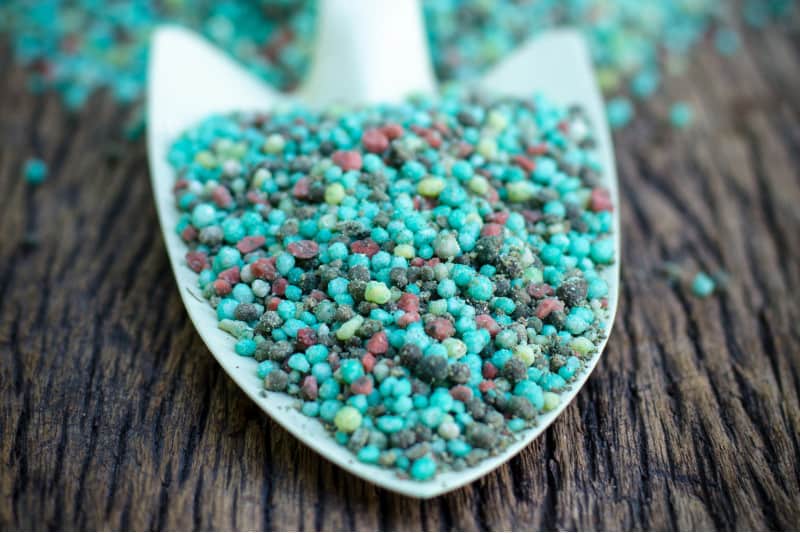
When used throughout the growing season, a high-phosphorus fertilizer will promote blooms and growth.
Propagation
There are two ways to propagate the Night Jasmine plant: cuttings or seeds. Both strategies have been shown to hasten the growth of the plant. However, we will just give you the steps in cuttings so that you can focus on one. It will only take a few weeks to get the new roots to emerge.
Here are the instructions on how to propagate this beauty:
- Remove a portion of the stem that is about 2-5 inches long.
- Place in a glass of water or a potting mix that is rich in compost.
- Place your cutting in a warm, sunny location.
- After a few weeks, new growth should occur.
Pro tip: Use only sterilized pruning shears or knives to avoid complications on your future plant.
Growth Zone
USDA hardiness zones 9 through 11 are the best for growing it. Planting this bush if you live in a frost-prone area might be a bad choice. Remember that this beauty isn’t frost-resistant at all!
Potting & pruning our Night blooming jas!
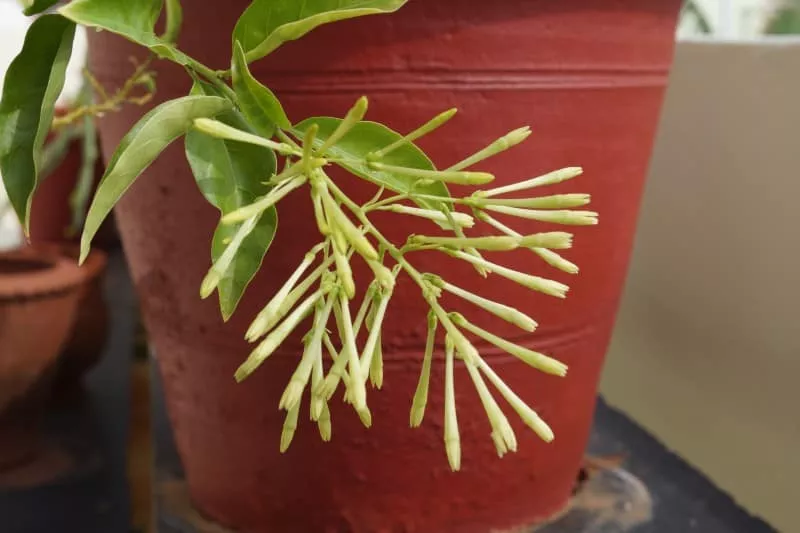
Because Jasmine prefers to be comfortable in its container, you should wait until it’s virtually pot-bound before relocating it. When a Night Blooming Jasmine gets root bound, it only needs to be repotted every two years. The plant should be planted in a pot with at least one hole for water drainage.
Use a mixture of sandy soil and peat moss. Make sure to keep the pH at a healthy level.
It’s simple to keep the plant in its natural shape, but you may also let it grow into a conventional bush shape if you want. To present a unique form, the plant can be trained into a frame or trellis. Tip cutting the stems back 3 to 4 inches to encourage growth in young plants is an alternative to complete pruning.
Night Blooming Jasmine Varieties and Similar Plants
Many have been in love with this beauty. That is for sure you’re one of them. But there are also a lot more like this beauty! We’ve provided some of them to add to your fragrant collection.
- Jasminum Grandi
The species Jasminum Grandiflorum, often known as Royal Jasmine, Spanish Jasmine, or Catalan Jasmine, is a subset of the Jasminum officinale. The difference is that, unlike ordinary Jasmine, this kind is frequently farmed for the food sector in addition to perfume production.
- Jasminum Nudiflorum
Winter Jasmine, Jasminum Nudiflorum, is a species of Jasmine with shrubs that grow up to 4 feet wide and 7 feet tall. Winter jasmine is distinguished by its bright yellow petals, contrasting with most other Jasmine kinds, which are white-flowered. These Jasmines, on the other hand, aren’t particularly fragrant.
- Jasminum polyanthum
Pink jasmines, or Jasminum polyanthum, are native to China and are known for their stunning floral display. It’s a robust evergreen vine that bears clusters of long-tubed pinkish-white blooms with a powerful scent.
Night Blooming Jasmine Diseases & Pests
Plant problems with Jasmine are uncommon. The plant flourishes when given care similar to that of its tropical to subtropical native environment. However, there are issues with Jasmine plants, and it’s crucial to know how to spot them.
Disease in these plants is easily identifiable and, in most cases, the result of cultural difficulties that are quickly remedied.
Here are some of them:
Pests
Different pests can infest and destroy the night jasmine plant. Namely: aphids, caterpillars, whiteflies, scales, and mites. These pests feed on the night jasmine plant’s blooms, sap, leaves, and roots, robbing the plant of its nutrients.
These pests harm the plant in the long run, causing it to develop unnaturally and distort its natural state.
Use a soapy water solution or a block of dish soap to eliminate the vast population of pests infesting the plant to alleviate these pest problems. A non-toxic way is to use dish soap or a soapy solution. That is, it is unable to affect the plant’s contaminated area.
In stock In stock Only 1 left in stock In stock
$59.99
Sold By:
Succulent Oasis
Mature Agave Lucky Crown Century Plant.
Rated 4.84 out of 5 based on 352 customer ratings00
Sold By:
Succulent Oasis
$10.99 – $29.99
Sold By:
Succulent Oasis
Medium Kalanchoe ‘Dragonfire’. A beautifully colored succulent.
Rated 4.84 out of 5 based on 352 customer ratings01
Sold By:
Succulent Oasis
$29.99
Sold By:
Succulent Oasis
Mature Succulent Plant Echeveria Lola.
Rated 4.84 out of 5 based on 352 customer ratings00
Sold By:
Succulent Oasis
$12.00
Sold By:
Cactus Island
Pilosocereus royenii (Puerto Rico dry forests)
Sold By:
Cactus Island
Diseases
Fusarium Wilt. The leaves and stems of the Night Jasmine plant are affected by this plant disease. Necrotic spots, discolored patches, streaked stems, and wilting leaves are all symptoms. To solve the problem, you can use Baking soda, water spray, and fungicide.
Frequently Asked Questions
Drought stress, too much nitrogen in the soil, or trimming at the incorrect time of year are the most common reasons for Jasmine not blossoming. So keep an eye on these signs and treat them as soon as possible.
All parts of the plant, mainly the fruit, are toxic and can produce high temperatures, quick pulses, excessive salivation, and gastritis. Breathing difficulties, inflammation of the nose and throat, sneezing, a severe headache, nausea, and dizziness are all possible side effects of the nocturnal scent.
This plant blooms from July through October, which is when Jasmine generates its distinctive smell. Throughout this time, the plant blooms in cycles that last about a week
Happy for you; you will not go around looking where to buy this beauty! You can now purchase it here at Plantly! We offer faster transactions online and ensure the safety of your plant. Contact us now!
Whether you want to buy, sell or simply reach out to other plant enthusiasts, Plantly is the right place to be!
-
$22.00Sold By: Cactus Island
In stock
Pilosocereus aurisetus ssp. werdermannianus HU103
Sold By: Cactus Island -
$44.99Sold By: Oasis Bamboo Tropical Nursery
In stock
Bambusa Ventricosa ‘Kimmei’ 1gal live plant
Sold By: Oasis Bamboo Tropical Nursery -
Free Shipping$394.79Sold By: BONSAI WORLD LLC
Only 1 left in stock
Juniper Bonsai Tree – Trained (juniper procumbens nana)
Only 1 available and it’s in 1 people’s basketSold By: BONSAI WORLD LLC -
Free Shipping$13.29Sold By: CZ Grain
In stock
1 Hybrid Willow Tree
Only 887 available and it’s in 1 people’s basketRated 4.60 out of 5 based on 156 customer ratings00Sold By: CZ Grain


